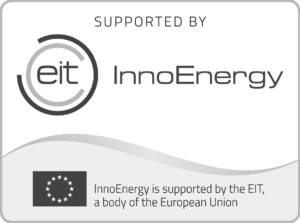25.09.2019
Shape the future of cardiology!
The European Society of Cardiology is hosting the ESC Digital Summit from 5-6 October in Tallinn, Estonia. This exclusive event is an ideal opportunity for thought leaders and digital health enthusiasts from Europe and beyond to join forces over two days in a bid to shape the future of cardiology. Piret Hirv from the Connected Health cluster will join experts on a panel to discuss Estonia’s experience in creating favourable conditions for the development of digital health.
According to Piret Hirv, the challenges in healthcare are quite similar across Europe: the population is aging, there is a growing need to deal with chronic diseases and there is a lack of resources. “The problems are complex,” explains Piret Hirv. ”Responding to the challenges with technological solutions is not only a task for doctors to solve. This is where new methods come in, such as co-creation platforms, community representatives, businesses and research institutes, etc. In order to achieve the best possible result in improving the state of health with the help of innovative technologies, the cooperation of many parties in the health environment is necessary.”
“The health care system is complex, and good solutions are based on the real needs of both patients and doctors. The cluster is the best place for the emergence and growth of health technology solutions in Estonia,” adds Piret Hirv.
Where cardiology meets technology
According to Margus Viigimaa, professor and cardiologist in the department of Health Technology at TalTech, there are more digital solutions in cardiology than other specialties: technology-intensive equipment has always come with the field. There are various digital solutions available for use in the cardiologist’s arsenal; he lists several that are primarily designed to treat and monitor chronic conditions: “We use 24/7 monitors to monitor cardiac arrhythmias and blood pressure. Patients with cardiac arrhythmia are using new stimulators connected to the arrhythmia centre by telemedicine and are being monitored by specially trained nurses so that they can be admitted to the hospital quickly when needed.”
When listing the possibilities of technology, you should start with a health information system: “Estonia’s huge advantage is a nationwide health information system,” explains Viigimaa, co-organiser of the summit in Estonia. “We cannot imagine the workload without it. Previously, it was difficult to obtain patient data from separate outpatient clinics, and each hospital had its own system. At the moment, there is an overview of the patient, whether they have visited a family doctor, a cardiologist in Tartu or Pärnu, etc. We see what medicines the patient has bought and what analyses they have had done. In Sweden, for example, patient data is only visible within the county.”
“Practical research is increasingly being conducted on the basis of health data, for example, how the treatment outcome of a hypertensive patient depends on compliance. We can monitor how often the patient has bought medication, what their blood pressure values have been and for what reasons. Here, you can easily improve the results,” he adds.
Currently, great emphasis has been placed on the use of decision support tools in medicine. “This is especially important for family doctors,” says Viigimaa. “I see many practical opportunities here, for example, a note appears on the GP’s desktop when prescribing a new drug saying that it interacts with one of the previous drugs, so we should use another one. However, there would be explanations on which treatment guidelines or studies these recommendations are based on. It would be an ideal tool and would significantly improve the quality of treatment.”
“Gene data is also increasingly used,” says the doctor. “We are currently working with family physicians on a project to select patients at extremely high risk for hereditary cardiovascular disease based on donors of the Estonian Biopank. Let’s see if the intervention and modification of risk factors will result in a significant reduction in risk.”
Future directions
Prof Viigimaa confirms that digital solutions are increasingly being discussed by cardiologists at the conferences. The fact that the recent conference of the European Society of Cardiology had a digital domain three times the size compared to that of the previous conference shows an upward trend. Solutions were offered in several areas: “Many tracking devices were introduced,” he says. “For example, defibrillators that look like vests to detect atrial fibrillation. There are many applications, but as a doctor, I see that the vast majority are not evidence-based. However, doctors see great potential in apps because they share recommendations. Often, doctors don’t have time for them.”
The European Society of Cardiologists definitely wants to contribute to the development of digital solutions, as there is no way around digital medicine. Many practical examples and solutions are presented in Tallinn, from which the society hopes to find applications to work with and standardise solutions for wider deployment.
What application does the cardiologist use himself?
Prof Viigimaa has the courage to recommend an application that he often uses in his work, ESH Care. It is an application developed by the European Hypertension Society for monitoring blood pressure and is freely downloadable from the website: https://www.eshonline.org/
More information and the programme: https://www.escardio.org/Congresses-&-Events/ESC-Digital-Summit
The organiser offers tickets at a 50% discount for participants from Estonia. Register by 26 September.












